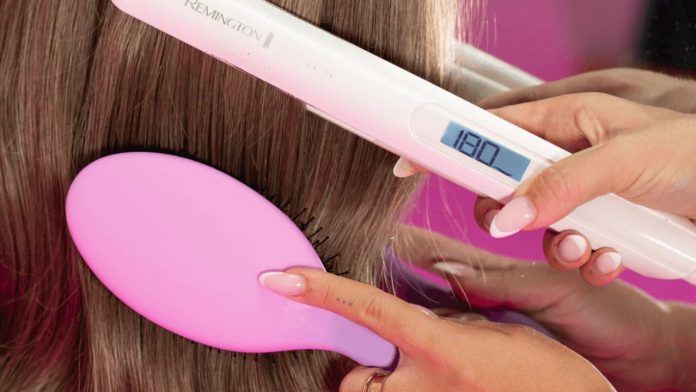The use of synthetic hair has also increased because it is more budget-friendly than natural hair options, and it can be styled easily. These hairpieces are woven out of fine plastic fibers and are made to represent hair’s texture and feel as closely as possible.
Although they are relatively easy to manage and pleasing to the eyes, synthetic hair needs specific treatment when exposed to heat.
In this article, the most asked question of what is synthetic hair made of is answered along with identifying the kind of synthetic hair that is acceptable to be treated to heat. The preparation procedures that should be followed and the consequence of using heat on normal synthetic hair fibers are also mentioned.
What Constitutes Synthetic Hair?
It is manufactured from various types of plastic, such as strong and shiny acrylic, polyvinyl chloride as well as robust polyester; the materials used for synthetic hair go through a process that simulates human hair. Being impermeable, synthetic filaments do not stick to moisture as natural hair does. Hence, they do not frizz in the humid climate but can easily be damaged by heat. There are different kinds of synthetic hair; some look real and can take some heat styling easily, although they are mostly not recommended for use with heat.
Styling Synthetic Hair: Is Heat an Option?
The general rule about styling synthetic hair with heat is rather complex. In the past, synthetic hair could not withstand high temperatures, but with the improvements in technology, synthetic hair that can bear heat has been developed. These improved versions can tolerate low to moderate heat settings, which provides more flexibility in styling; it is crucial, however, to differentiate between regular and heat-resistant synthetic hair to avoid unintended damage.
Preparation Steps for Heat Styling Synthetic Hair
Utilizing Heat on Heat-Resistant Synthetic Varieties
Embrace the capability of heat-resistant synthetic hair by choosing styling tools that allow for meticulous temperature adjustments. At the initial stage, do not set the temperature of your styling tool too high, as this may burn or harm the fibers. Thus, resistance does not mean it is heat-proof; therefore, it is more suitable to start at a low temperature and steadily increase it, if required, to maintain the hair’s health. This measured approach aids in achieving desired styles without compromising the hairpiece’s durability and appearance.
Safeguarding with Heat Protectant Spray
Even synthetic hair that withstands heat requires a barrier against potential heat damage. Spraying a layer of heat protectant designed for synthetic fibers helps shield the hair from direct heat exposure. Distribute the protectant evenly across the hairpiece, ensuring every strand is covered. This not only preserves the hair’s aesthetic quality by preventing singeing and melting but also enhances styling outcomes by providing a smoother surface for heat tools to glide over, resulting in less friction and breakage.
Initiating with a Strand Test
Conducting a strand test is akin to a preliminary survey before embarking on a full-scale styling expedition. Select a small, hidden section of the hairpiece to apply heat. This test gauges how the synthetic fibers react to varied temperatures, allowing you to identify the optimal heat setting with minimal risk. A successful strand test paves the way for a confident styling session, ensuring that you can achieve your desired look without fear of damaging the entire hairpiece.
Minimizing Heat Duration
The mantra ‘less is more’ holds when applying heat to synthetic hair. Each section of the hair should only be exposed to heat momentarily, swiftly moving the styling tool along to avoid concentrating heat in one area for too long. This strategy minimizes the risk of heat damage, such as melting or warping the fibers. Consistency and speed in your movements ensure that the hair is styled effectively without compromising its structure or visual appeal.
Consequences of Applying Heat to Traditional Synthetic Hair
Heat-induced Fusion and Clumping
Applying heat to non-heat-resistant synthetic hair often results in melting. The fibers can fuse, creating clumps that are impossible to detangle. This immediate damage compromises the hairpiece’s appearance and functionality.
Deformation from Heat Exposure
Exposure to heat can deform traditional synthetic hair, causing it to lose its original shape and texture. Once altered, it’s challenging to restore the hair to its pre-styled state, leading to a diminished aesthetic appeal.
Structural Weakness
Some of the adverse effects of heat on synthetic fibers can be irreversible. Heat makes synthetic strands to become frail due to the reduction of their elastic capability. Split ends can easily break, which vastly shortens the lifespan of the hairpiece and lowers the aesthetic appeal.
Conclusion
As humans are evolving so is the style. This evolution in style has brought us synthetic hair that can be styled with the help of heat. But it is important to know and appreciate the limits that come with it. Synthetic heat-resistant hair is more versatile in styling and durable but even the latest fibers should be treated gently and specific precautions employed to preserve the look. It is crucial to also note that conventionally manufactured hair extensions typically should not be styled with heat to avoid permanent harm.








